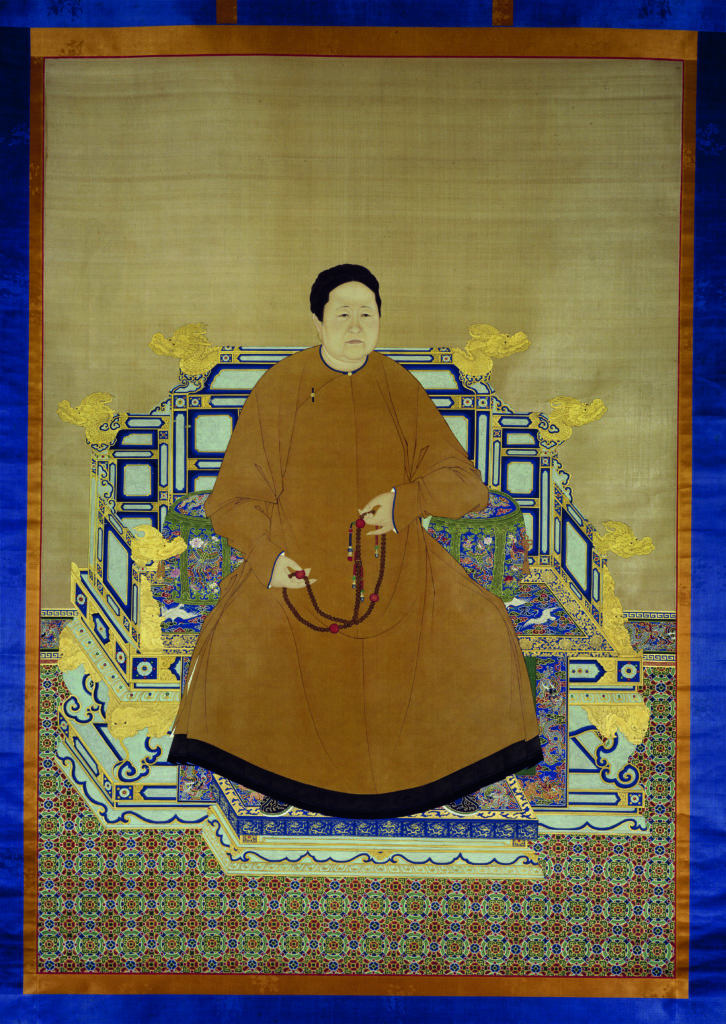By Sheila Wickouski


Empresses of China’s Forbidden City, 1644-1912 at the Smithsonian Freer/Sackler is a sumptuous feast for the eyes.
While the costumes and jewelry, ceramics and art of the Qing dynasty are well worth exploring for their beauty alone, there is more than meets the eye at first glance. Behind the artistry of these rich pieces is revealed the lives of these powerful women in their society.
The Qing dynasty, one of the largest dynasties to ever rule in world history, began in 1644 when the Manchu rulers from northeast Asia adopted the Forbidden City in Beijing as their center of governance.
Empresses entered this royal life through marriage, and the exhibit fittingly starts with five paper paintings from the 144 pages of the wedding album of the Empress Xiaoding to the Guangxu emperor in 1889. Her wedding gown bedecked with symbolic details of dragons and phoenixes is the first of many on display.
We know that there was only one empress at a time, with eight ranks of importance of multiple royal wives in the harem. They were influential individuals in religion, art, politics and diplomacy.
While magnificent costumes, jewelry and portraits selected from the almost two dozen empresses reveal their tastes, scenes on painted screens show they were active women who rode horses and traveled about, participating in hunts with men.
Marriages were arranged based on imperial standing but there were also love matches. On display is an elegy by one emperor, in his own hand, of his love for his beloved empress who was his childhood sweetheart.
Most of the 135 objects in this exhibit have never been seen outside of Palace Museum in the Forbidden City. The most notable exception is the portrait of the Empress Dowager Cixi, painted by an American artist, as a gift to President Theodore Roosevelt, and placed in the Sackler’s entrance hall where the exhibit begins and ends. Cixi would challenge the tradition that “women shall not rule” and held power for almost half a century. The Qing dynasty would come to an end shortly after her death in 1908.
The exhibit is at the Smithsonian Freer/Sackler Gallery until June 23.

